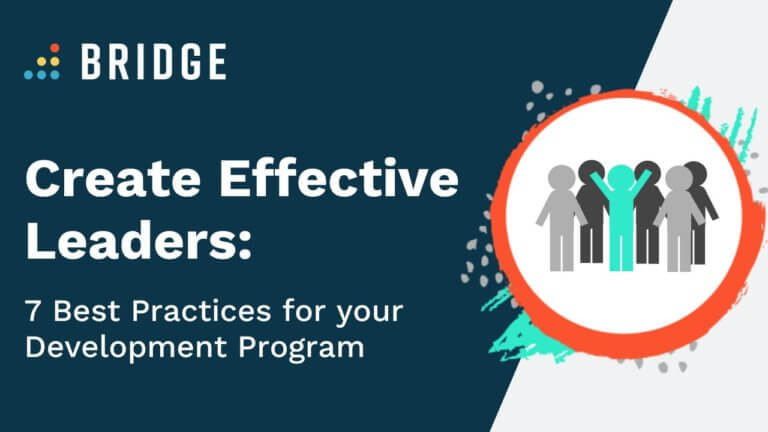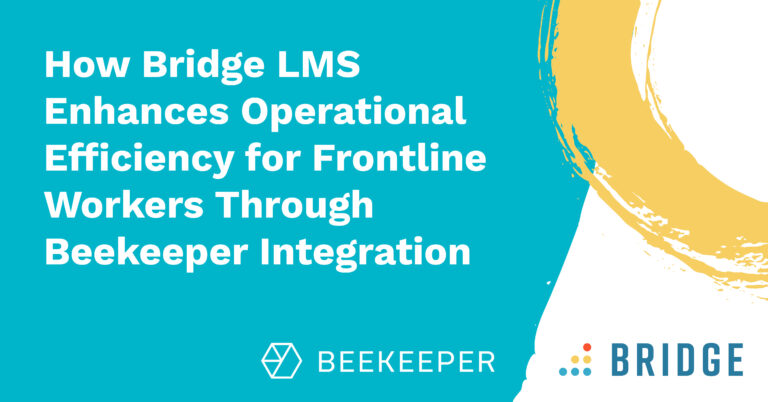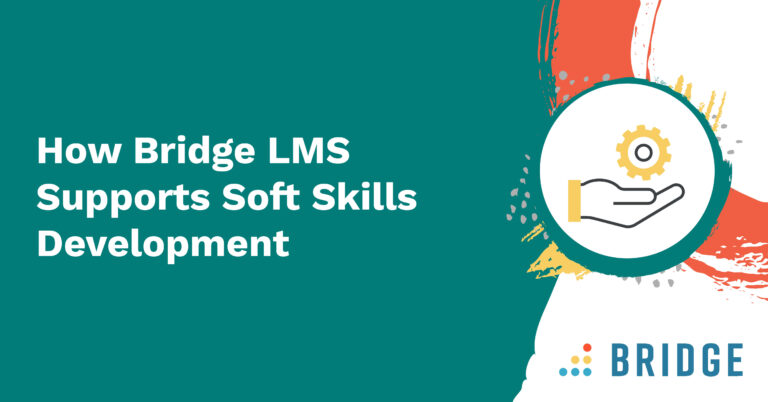It takes a varied and well-rounded skillset to be a great leader. More than just a figurehead, an effective leader is responsible for steering your organization to success with a compelling mission and vision. They must create and communicate a shared purpose that inspires people to be their best, and influence how valued and engaged your people feel.
Ongoing training and development is essential as leadership positions increasingly demand greater agility, new challenges arise, and employees seek authentic connections.
Great leadership development programs connect your talent with the training and tools to overcome obstacles, inspire trust, and drive outcomes—all with an employee-centric focus.
The Importance of Leadership Development
To lead effectively, your people need time to develop and refine a combination of soft, technical, and behavioral skills.
According to a 2022 Gartner survey, the effectiveness of leaders and managers is a top priority for 60% of HR professionals. However, a quarter of respondents don’t believe that their organization’s current approach to leadership development addresses the skills needed for the future of work. In a turbulent world, companies are increasingly looking for leaders whose human-centric behaviors provide stability through empathy, adaptability, and flexibility.
When you invest in developing your people, you give them the confidence to move into their roles, primed with knowledge and experience to handle what’s ahead.
It’s not just future leaders who benefit from development programs—your current leaders and managers can also benefit from training that refreshes, refines, and builds their skills.
7 Development Program Must-Haves to Nurture People-First Leaders
Prepare your leaders with the necessary skills and behaviors to inspire, motivate, and adapt using the following strategies:
1) Define What Present and Future Leadership Success Looks Like
Finding people with the potential and capability to lead requires careful consideration of existing talent and your company’s present and future priorities. The starting point in your development program is to define what success means. Outline your organization’s current goals, aspirations, and leadership priorities.
Gather evidence from stakeholders about the skills your workforce will need and the ones your leaders must have to steer it to success. With a list of clearly-defined targets and goals, you can create a roadmap that directs future leaders toward success.
MORE WAYS TO BUILD EFFECTIVE MANAGER AND LEADER TRAINING PROGRAMS | ‘Unlock Your Employees’ Potential With People-First Managers’
2) Look for Employees With Leadership Qualities at Every Level
Review internal data such as performance reviews and skills feedback to see what talent currently exists. Employees who already display the qualities your organization is looking for and who deliver consistently high results make good candidates.
Evidence for future leadership potential isn’t only found in employees with existing leadership experience. Feedback from peers and managers highlighting skills like teamwork and flexibility can also indicate future success.
If an employee shows interest in developing qualities such as problem-solving, adaptability, and communication, or is actively working toward developing these skills, they may also have what it takes to succeed. Be mindful that not all employees with leadership qualities have had the opportunity to show their potential.
PREPARE YOUR TALENT TO STEP INTO LEADERSHIP ROLES | ‘Succession Planning: A 6-Step Strategy for Success’
3) Uncover the “Why” During Career Conversations
It’s not enough for your people to express a desire to advance in their careers or to lead. Equally, you want to avoid setting an employee up for a role they don’t want. Dig deep and start to explore career aspirations. Discuss the skills they want to develop instead of the job title they want to find their purpose and discover what drives them.
The answer will be different for everyone, but this step is about helping future leaders define what success looks like and matching their aspirations and desired skills with relevant training to help them achieve these goals.
Enlist managers in this step. During one-on-ones, they should ask questions to understand what drives each employee, such as:
- What motivates you?
- What does success look like to you?
- What does a meaningful career look like?
A development plan will connect goals and career vision with a list of practical steps. Any leadership development plan should outline the training and activities each employee will undertake, the capabilities and competencies they need to display, and a timeframe for their goals.
YOUR GUIDE TO CREATING TRAINING PROGRAMS | ‘How to Launch a Training Program at Your Organization’
4) Provide Ongoing Mentoring and Coaching Opportunities
While online courses help learners get to grips with the technical aspects of the role, your people are the best source for soft skills and behaviors. Aspiring leaders need someone they can trust for guidance and support as they develop.
Embedding coaching in leadership development activities gives aspiring leaders a chance to find their leadership style and apply it to real-life situations such as problem-solving, conflict resolution, and building connections.
By observing future leaders as they apply what they’ve learned to real-life examples, coaches can offer tailored feedback and insight relevant to their goals, helping to improve results. It’s helpful to have an experienced mentor to guide employees through challenges and discuss any problems they’re facing with regular one-on-ones and feedback.
HOW TO PRIORITIZE LEARNING AND DEVELOPMENT | ‘Your Employees Are Busy—Here’s How to Offer Protected Learning Time’
5) Create Personalized Learning Pathways
Map out the training employees should receive and deliver it at the moment of need to keep it relevant and avoid overwhelming them with information. Assigning content based on best practices, processes, and workflows, or reinforcing company culture at critical moments in the development journey, can complement on-the-job training and fit seamlessly into the flow of work.
Deliver training in engaging formats such as live video training sessions or group discussions, and leverage social learning to connect with other aspiring managers and leaders. This creates a cohort-based mentality for learners to motivate each other and build connections—especially in remote and dispersed learning environments.
Keep a close eye on analytics such as success rates and completion time to see where learners really shine and where they could use some additional support and personalize their development journey with training to close skills gaps as they appear.
MORE ABOUT PERSONALIZED LEARNING JOURNEYS | ‘How Personalized Learning Enhances Employee Skills Development’
6) Review and Refocus Goals Regularly
Always tie leaders’ performance metrics back to larger organizational outcomes, clarify the purpose behind learning and development, and reinforce the impact of activities. The right performance management tools make tracking goals easier by keeping objectives in mind, but ongoing performance conversations should be part of every development journey. journey. Remember that goal setting should be an ongoing conversation, and targets can be adjusted where necessary.
Setting and reviewing goals enables learners to measure their progress and see how well they can apply what they’ve learned. During one-on-ones, learners can reflect with their manager on their strengths and weaknesses, the experience they’ve gained, and how they’re tracking toward goals.
IMPROVE DEVELOPMENT OUTCOMES | ‘What Are SMARTER Goals and How Do They Help Measure Employee Productivity?’
7) Keep Communication Flowing
Communication from leaders and managers has never been more important. In hybrid and remote working environments, employees are increasingly looking for connection and guidance, and 70% want more daily or weekly check-ins, according to a RedThread report.
For leaders, this means conveying strategy and culture at all levels and engaging in sincere conversations with an “open-door” policy. Whether it’s face-to-face, in the form of short video updates, or emails, connection is maintained by being available and keeping channels of communication open. Connecting regularly through company updates and sharing achievements and insights lets employees know that leaders are consistent and dependable.
Instill the value of communication in your leaders and give them opportunities to build relationships in different areas of the business, lead on projects, and practice giving feedback.
MAKE EMPLOYEES FEEL HEARD | ‘4 Ways to Create a Culture of Conversation for Your Organization’
How to Measure the Impact of Leadership Development Programs to Maximize Success
Evaluating the effectiveness and impact of your program is key to rating how successfully learners have acquired the skills, behaviors, and knowledge they need—and how well they use them.
1) Look at Course Metrics and Evaluations
Look at course metrics and evaluations to see how learners engage with training materials. An LMS with comprehensive analytics can uncover a wealth of information on completion rates, time taken to complete a course, and quiz scores. Use this data to inform how engaging your course material is and how well learners understand the material.
Ask for course feedback to measure the benefit of training and whether your respondents apply the things they learned in their daily working lives.
2) Measure Success Against Performance Goals
A true measure of success lies in how leaders use the skills they learn and apply knowledge day-to-day. Look at their performance goals and how effectively they’re meeting these targets.
Whether that measure is revenue increase or employee retention, the data will reveal the outcome of training in specific areas.
THE IMPORTANCE OF ONGOING PERFORMANCE CONVERSATIONS | ‘Why Performance Reviews Shouldn’t Be a Once-a-Year Deal’
3) Look at Team and Individual Metrics
The success of your leadership will show in other areas of the organization. Evaluate the leader’s department or line of business to see how many employees are progressing in their careers, whether they’re satisfied with the work they do, and if they’re reaching their goals. This information can show how effective your leaders are at communicating, delegating, and planning ahead.
4) Ask for Employee Feedback—Then Use It!
According to Microsoft, employees who believe that their companies use feedback to drive change are more satisfied (90% versus 69%) and engaged (89% versus 73%) than those who don’t.
Employee engagement surveys are an effective way to reveal how satisfied your people are with leadership and whether or not they feel listened to. Leaders should regularly share feedback to build trust with employees and to show they care.
Looking for More Ways to Develop Your Leaders?
Download our full ebook for more actionable ways to develop high-impact leadership strategies.
You’ll find a wealth of insight and information, from defining the skills your organization needs for future success, to practical ways to support learners with ongoing training, to how to measure the success of your leadership development programs.




